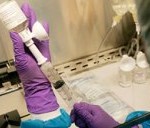 New Yorkers now have what health officials say is the first cancer mapping system that drills down to a neighborhood level so they can check out rumors of cancer clusters and see if that big industry down thstreet is surrounded by new cancer cases.
New Yorkers now have what health officials say is the first cancer mapping system that drills down to a neighborhood level so they can check out rumors of cancer clusters and see if that big industry down thstreet is surrounded by new cancer cases.
The map shows every community in the state with cancer cases reported from 2003 to 2007, if they are near a potential environmental factor, such as a factory.
But just before state officials released the website to the public Monday, they listed a long line of cautions not to draw conclusions from the data.
For example, patients ages aren’t listed, there is no accounting for risk factors like smoking or family history, the cases are only new incidents when they are diagnosed and don’t consider the time a tumor may have been developing, and the community data is based on the 2000 Census. A group of cases also could reflect a good local screening program, the location of nursing homes, or regional trends such as smoking, officials said.
Still, the website required by a law passed two years ago provides access to public data that state government has collected for years and is seen as a powerful tool for New Yorkers to start to understand cancer trends in their communities.
“The Legislature stepped in because the data was there and it was being kept secret,” said Assemblyman Richard Brodsky, a Westchester Democrat. “Getting the truth out is never a bad thing.”
Sen. Thomas Libous, a Broome County Republican who co-sponsored the bill to create the map first proposed more than a decade ago, said there was concern in state agencies that this would provide too much information.
“We said that was nonsense,” Libous said. “We think this is pretty awesome stuff.”
In a sparsely populated area with a few cancer cases, the area will be enlarged as one of several measures to protect the confidentiality of patients. The Pataki and Spitzer administrations had resisted the mapping, saying they were concerned about patients’ privacy.
Dr. Daniel Igor Branovan of the scientists’ group Project Chernobyl called the website an exciting step.
“This information, when properly examined and analyzed, should open our eyes to new risk factors and environmental pollutants that contribute to significant increases of many cancers among our population,” said Branovan, director of the Thyroid Cancer Center at the New York Eye and Ear Infirmary.
“There is a grave danger a statistical anomaly could lead to conclusions that are not justified,” Brodsky warned. But he said the data will allow New Yorkers to “ask reasonable, thoughtful questions that only scientists can answer.”
{FOX23News/Noam Amdurski-Matzav.com Newscenter}











